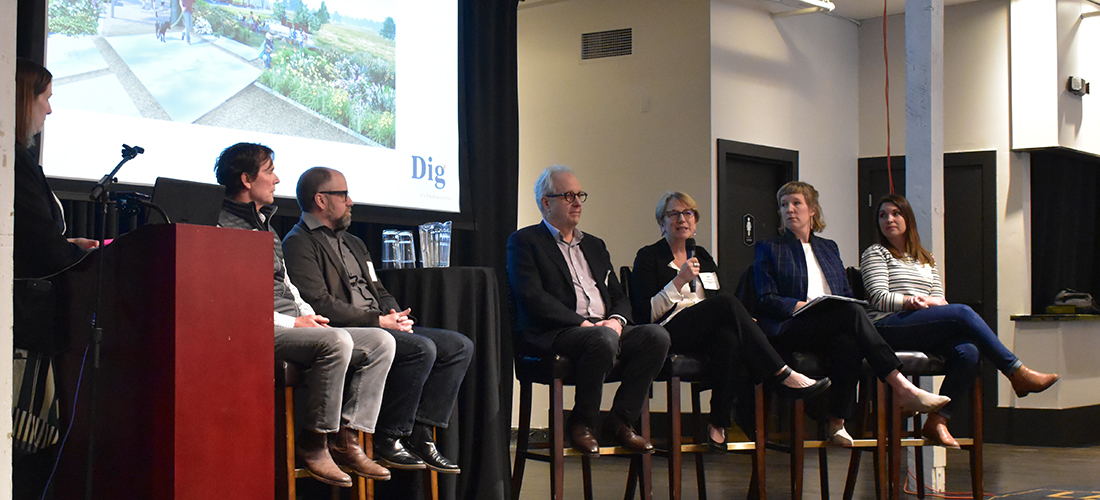Urban Greening: Designing for Biodiversity in the City
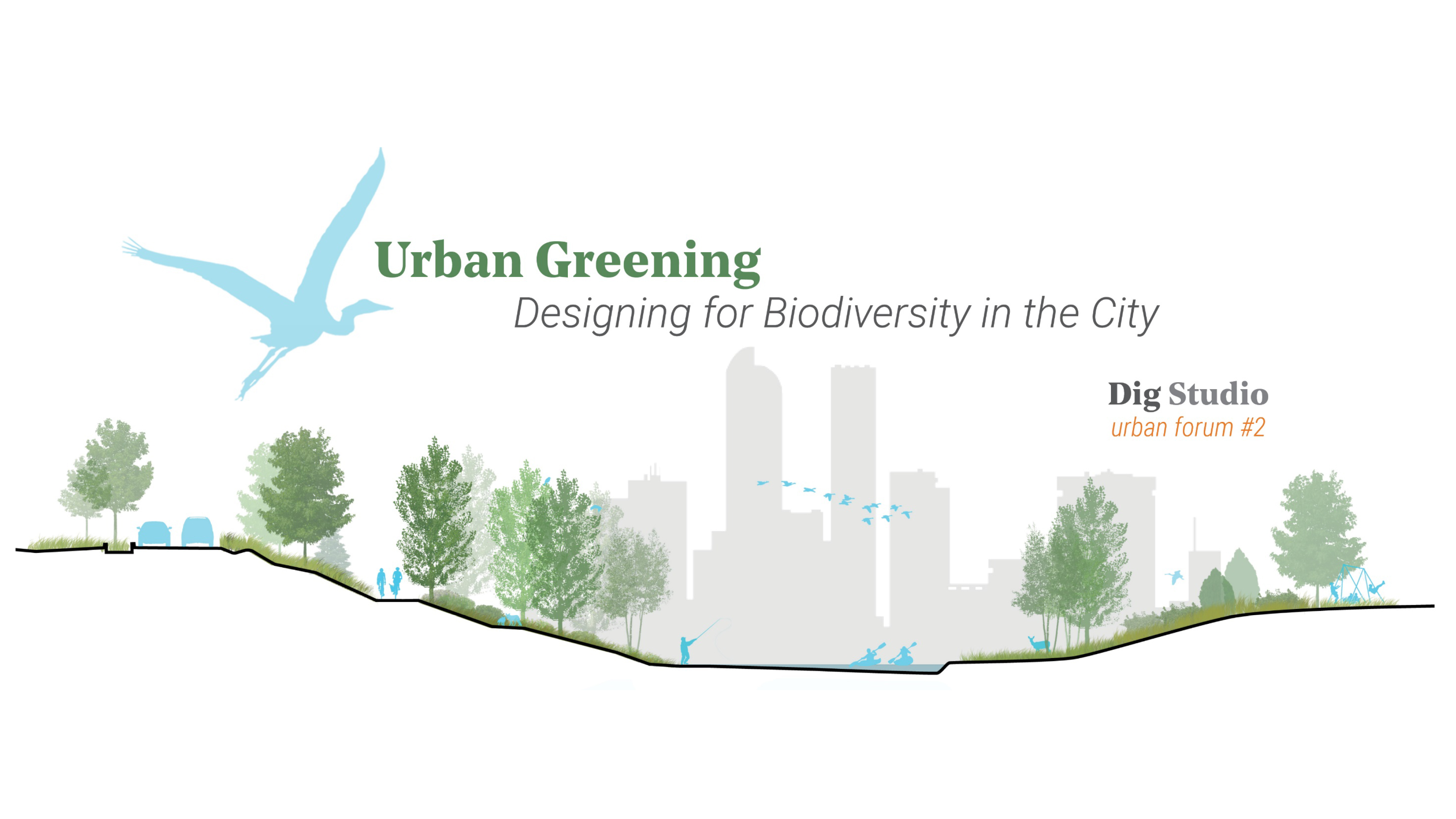
The subject of urban greening and biodiversity was explored in depth at an urban forum Dig Studio hosted in early March ahead of the COVID-19 pandemic hitting US communities. During this Urban Greening: Designing for Biodiversity Forum, national speakers exchanged perspectives on successes and challenges on urban greening measures from public, private, and community perspectives. Dig Studio’s impetus for convening this forum was spurred by observed incremental measures cities have taken in the past decade to enhance resiliency to climate change, increase open space systems to serve growing populations, and increase green infrastructure and stormwater cleansing measures. Cities are also recognizing an emerging disconnected ecological framework, and the need to become more contiguous in order to maintain functional systems necessary to support wildlife, pollinators, and habitat. Dig Studio sought to convene a conversation between professionals on successes and lessons learned from various implemented efforts of cities similar to Denver.
Developers wanting to implement urban greening measures within their projects often face unforeseen challenges in implementing urban greening initiatives. For example, the development company Urban Villages wanted to install a rooftop garden on a parking garage in Denver, and found there was no zoning for privately owned urban farms. Grant McCargo, CEO and Founder of Bio-Logical Capital and Urban Villages, worked with the City of Denver to gain an exemption for urban agriculture as an accessory use for parking garages, and from that emerged ‘Larimer Uprooted’, a rooftop culinary garden. McCargo noted that placemaking is a side benefit, in that a place not previously associated with social gathering is now an enjoyable place to visit. Urban Villages is installing other greening interventions in Larimer Square at street level – people are drawn to a mid-block courtyard where perennials and food are being grown within an atmosphere of respite and rejuvenation.
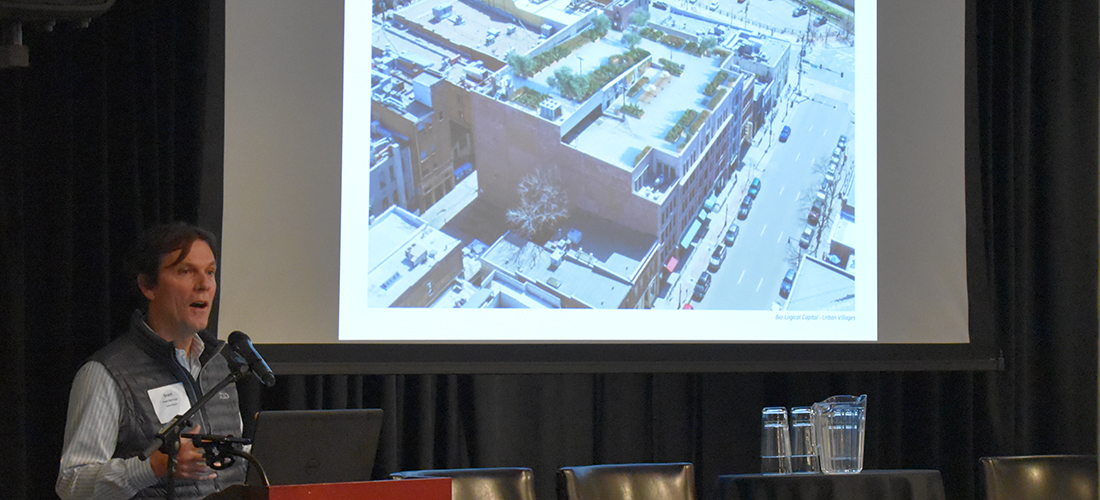
McCargo states that there are many unexplored areas in public policy where developers and municipalities are coming together to ‘figure it out’ on issues ranging from district scale utilities in private development, use of rainwater for urban agriculture, green roof policies, and greening alleyways. McCargo’s recommendation for cities is to ‘foster an urban greening movement’ by becoming less rigid, supporting innovation, and allowing urban greening to occur without as much process and regulation. “If you can help developers be more creative and innovative, everyone involved will benefit”, said McCargo. He goes on to say, “Developers are not held to a high enough standard. You can build in parts of Denver today and have zero requirements to have any green.”
For the public sector, urban greening and biodiversity measures have advanced over the past decade, and in many cases are underscoring policies across all departments. In the City of Edmonton, development activity in the late 1990’s led to public outcry against its impact on the city’s natural areas. Since that time, Edmonton evaluated what it could do better, and over the past two decades, has advanced numerous biodiversity initiatives. The city now boasts 75 natural areas, 37 wildlife passages, and a $25M land acquisition trust. Grant Pearsell, Urban Biodiversity Strategist and retired Urban Planner, City of Edmonton, shared lessons learned over the past two decades from his leadership of initiatives to become a Biophilic City. Many of these lessons can be informative elsewhere. Don’t let regulation stifle innovation – city regulations must be adapted to the situation. Don’t let operational costs be an afterthought – bring operational people in at the beginning of the design process when a non-traditional green infrastructure system will become their responsibility to maintain. Be mindful of market realities – if a sustainable community development proposal is outside the attainability of most residents, it is not practical. Create tools to alleviate process bottlenecks – such as Edmonton’s Wildlife Passage Engineering Design Guidelines, which are not adopted policy, yet have been utilized to build 37 wildlife passages.
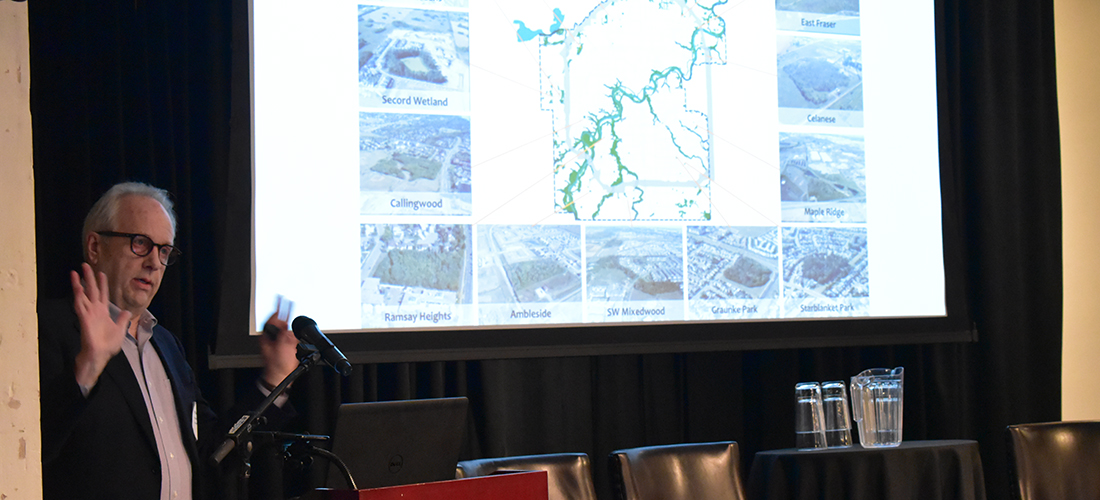
The public sector also benefits from public private partnerships, which are becoming increasingly important in urban greening initiatives. In Minneapolis, the Grand Rounds National Scenic Byway encircles the city, and follows the H.W.S. Cleveland 1883 Park System Plan. Most of this plan has been implemented, but the remaining connective sections yet to be built are the most difficult to implement. Recently the city was able to build one of the missing links through a public private partnership at Towerside Park. This project brought together developers, non profit agencies, the watershed district, and the park agency to achieve goals for flexible open space, regional trail connectivity, a district stormwater facility, and transit access. The park was financed through a range of tools including park property taxes, regional trail funding, a park dedication ordinance, and stormwater fees.
These partnerships and combined funding sources are becoming more of a standard way to accomplish interrelated goals. Carrie Christensen, Sr. Planner, Minneapolis Park & Recreation Board stated “P3’s are going to be an important component for Minneapolis to continue to build out their park system”. Christensen admits there is a fine line to creating an action oriented and desirable end result without an accompanying push on the policy side, but Minneapolis is seeing lots of creative examples of informal and community-centric urban greening initiatives emerging that they want to capitalize upon.
For some communities, urban greening and biodiversity initiatives help fill the gap on per capita open space targets. In Denver, the voter-approved tax measure 2A commits 1% sales tax to parks. This measure is much needed in a city where population grew 41% between 1998 – 2018. According to the Denver Post, this period of growth resulted in a tremendous loss of biodiversity through a decline of open space to 8.9 acres per 1000 residents – far below the national norm of 13.1 acres.
The City has recently established a Resiliency Group, which is adapting early 20th century City Beautiful Movement landscapes into a 21st century ‘Eco-Beautiful Movement’. Their work is cut out for them. Denver Parks and Recreation are the third highest user of Denver water, said Cincere’ Eades, Parks Resiliency Principal Planner. She recently led the development of a Landscape Typologies manual, which outlines how Denver Parks can convert irrigated bluegrass landscapes into combined bluegrass, native, and riparian landscapes. Another major initiative being spearheaded by the City of Denver and the Downtown Denver Partnership is an urban forest initiative. With only 4% current tree canopy coverage, the goal of this pilot program is to move the city to 10% coverage, while monitoring and assessing longer term impacts on health, cooling, and air quality.
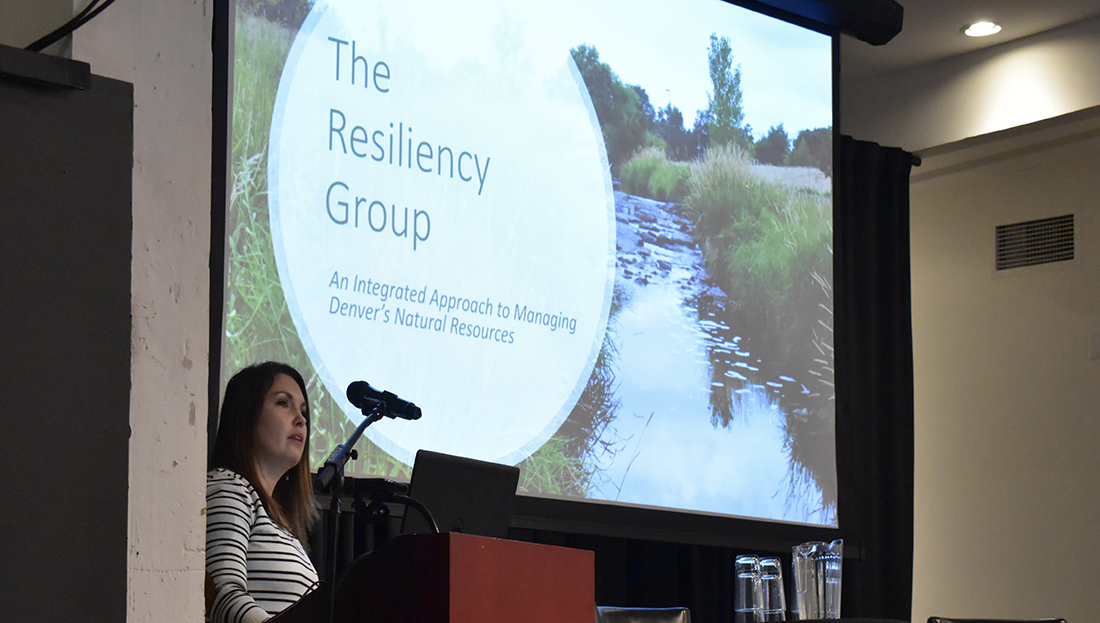
Urban greening and biodiversity initiatives must also address a growing amount of impervious surface in urban areas. Denver faces challenges with 49% of its surface area being impervious – an amount that is projected to grow to nearly 65% by 2040 with continued development (CU Boulder). One challenge in addressing this issue involves water policies and how they are applied to private development. The majority of development occurs on lot sizes of less than ¼ acre, and yet Denver’s water quality infrastructure policies cover development thresholds of one acre and above. The challenge the city recognizes is that often developers want to contribute only the bare minimum open space requirements, but the city would like to see more partnerships with developers to contribute to the water quality, biodiversity, and our open space networks. “The balance can be tough to achieve between giving developers more leeway in experimenting with new ways to provide open space, and city policies which often don’t allow flexibility to the guidelines regulating right of way or publicly owned property,” stated Brian Wethington, Green Infrastructure Project Manager, Denver Dept. of Transportation & Infrastructure.
From the community perspective, there is often a disconnect in the general public’s understanding of the broad issue of biodiversity. But nature and open space is becoming more of a priority to the public for healthy living, stated Beth Conover, Director of Salazar Center for North American Conservation, referencing rising sentiment reflected in the 2020 Colorado College State of the Rockies Project. Equity in urban greening has been brought under the spotlight in recent weeks with the closure of civic institutions from schools and libraries to museums and recreation centers, demonstrating stark differences between communities. Low income communities are more likely to lack parks and green infrastructure where these benefits are often most needed. The need for cities to invest equitably in parks and open space is necessary to reverse decades of underinvestment in underserved neighborhoods. Denver’s health equity index is one tool that has been used to identify neighborhoods with the highest hurdles to leading healthy lives, and the city has been investing in those neighborhoods with major new parks, such as Paco Sanchez Park and Carpio Sanguinette Park, both designed by Dig Studio.
